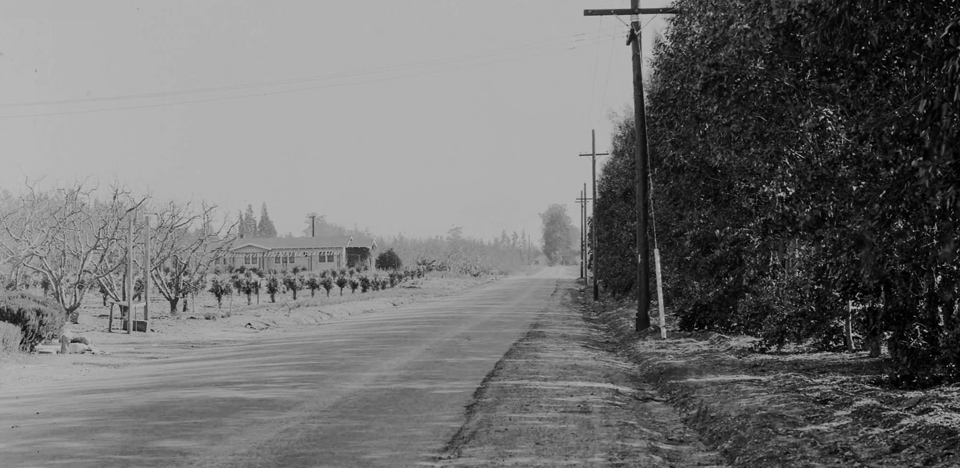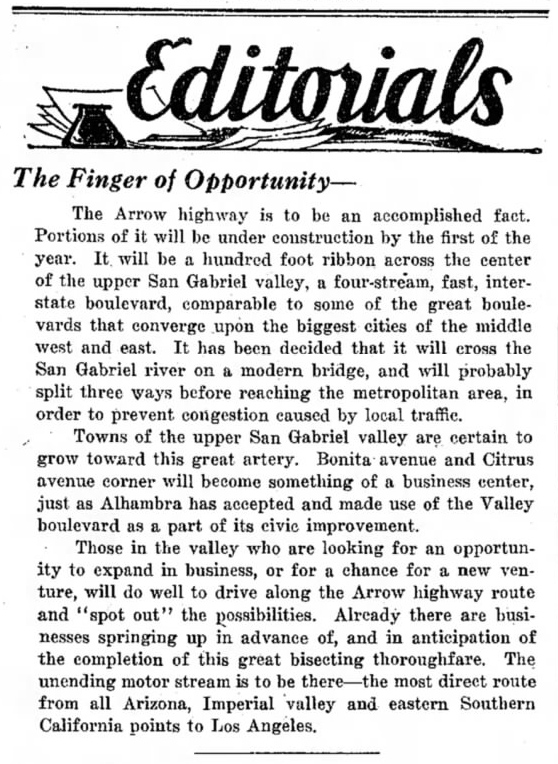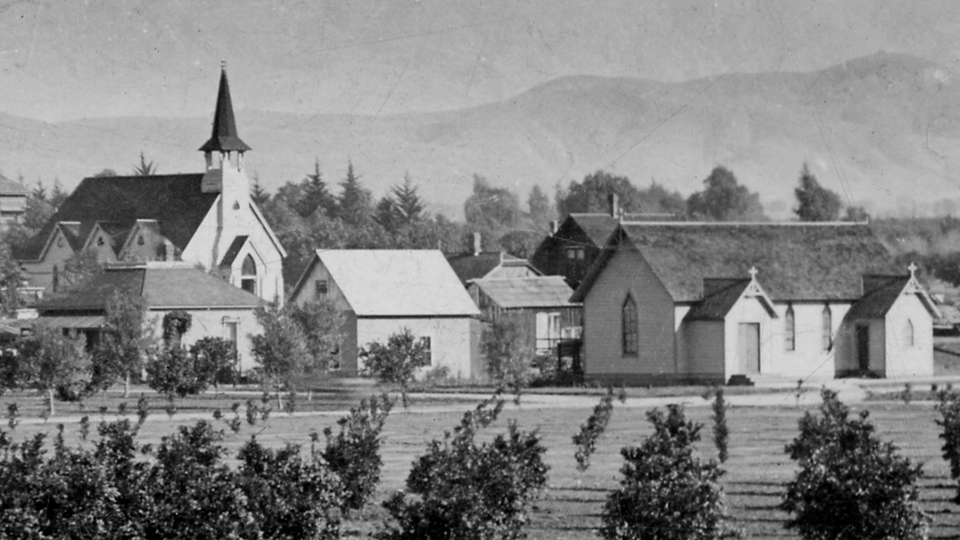One-hundred years ago today – March 20, 1924 – the "Arrow Route Association" was formed at the Sycamore Inn in Upland1,2 to promote the development of a modern 80-foot-wide2 interurban highway from San Bernardino to Los Angeles. It was proposed to relieve traffic on Foothill Boulevard while also linking the business districts of Rialto, Fontana, Cucamonga, Upland, Claremont, La Verne and San Dimas.1,2 The ambitious initial plans even called for the new thoroughfare to extend beyond Los Angeles to Santa Monica.3


A pleasant rural stretch of the early Arrow Route in Cucamonga, San Bernardino County, 1933. (The approximate location today.)
Photos courtesy Darin Kuna and Huntington Digital Library.
In Covina at that time, the existing main boulevards to Los Angeles – Foothill and Valley – were 3 and 7 miles away from town respectively; not exactly convenient. The Arrow Highway, however, was to pass only a mile north of Covina, so community leaders were very much for the idea right from the start. Accordingly, on November 6, 1924, Covina's own J. L. Matthews was appointed chairman of a committee to oversee Arrow's completion west from La Verne to El Monte, where it was to intersect Valley Boulevard.4
Matthews, significantly, was also the publisher of the city's most influential newspaper, which he used as a platform to actively booster the plan. In this editorial, it's clear he could hardly contain his enthusiasm.

Covina Argus, September 30, 1927.5
Ironically, it would be landowners in the Covina area who would erect most of the procedural roadblocks that impeded Arrow Highway's eventual completion.
